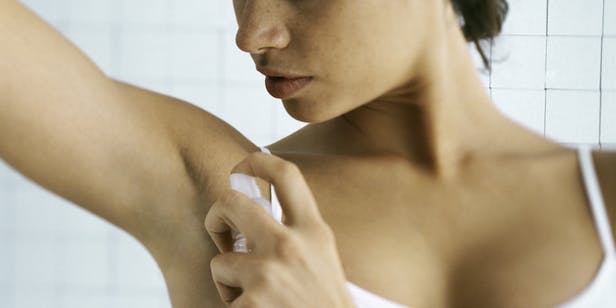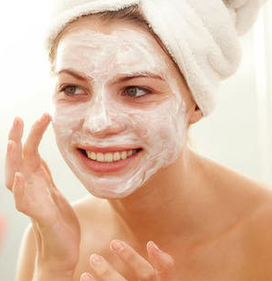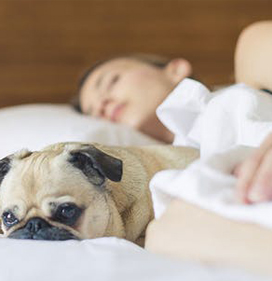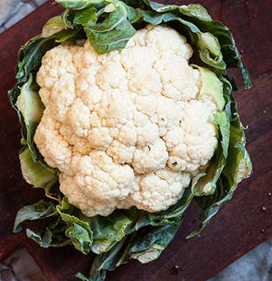
Does teeth whitening
really work?
Whether it's from tea, coffee, red wine, or all of the above, stained teeth are something many of us grapple with. With so many home-whitening kits and toothpastes on the market, is it worth seeing the dentist to get them professionally whitened? As Emily Dufton found out, beauty sometimes equals pain.

As a regular drinker of strong black tea (bag left in for at least four minutes, please), I'm no stranger to teeth that are less than perfectly white.
I’ve tried whitening toothpastes, at-home whitening kits and always ask my dentist to de-stain my front teeth during my usual six-month check-up, but so far I’m yet to find a semi-permanent fix.
After contemplating professional whitening for a while, I took the plunge and booked in an in-chair whitening appointment.
How does it work?
As Dr Luke Cronin from Quality Dental, North Sydney explains, teeth whitening lightens the tooth’s natural colour and helps to dissolve surface discolouration.
“The active ingredient, hydrogen peroxide, safely dissolves noticeable stains and discolouration on the tooth’s surface,” Dr Luke told me during our consultation. “As the whitening agent is broken down, oxygen penetrates the external enamel to whiten the tooth’s internal tissue – dentine – which is naturally yellow in colour.”
I was booked in for a Philips Zoom in-chair whitening treatment, made up of three 15-minute sessions under the Zoom LED light, which accelerates the whitening agent and process, meaning your teeth could potentially get up to eight shades whiter safely in one treatment.
After a quick ‘before’ photo with Dr Luke, I was whisked into the chair and asked what my favourite TV show was. A few minutes later, I was lying back comfortably watching TV, while the dental nurse prepared me for my treatment.
Does it work for everyone?
"The whitening endpoint, or maximum whiteness, is different for everyone, which means you may not get the same result as your friends,” Dr Luke advises. “This is due to genetics, early childhood health when your teeth are forming and the condition of your teeth.”
Fortunately for me, my teeth whitened several shades after the session and I was really pleased with the instant results.
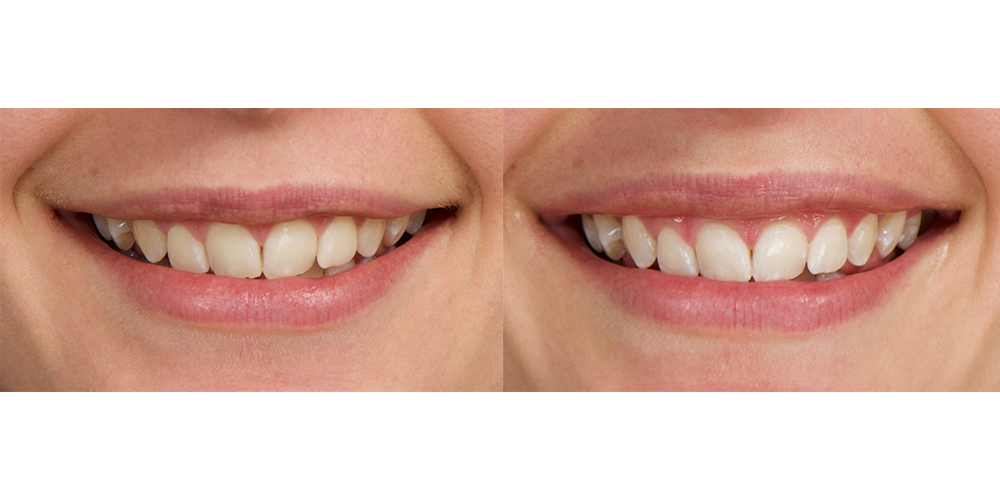
Image: My teeth, before and after
Does it hurt?
The pain from tooth whitening is something many people worry about, but tooth sensitivity is unique person-to-person and is related to the tooth’s enamel and dentine.
“The enamel forms a protective barrier over the dentine, which is made up of tiny microscopic tubules that contain nerve endings,” explains Dr Luke. “General sensitivity occurs when the dentine loses its protective enamel coating and the nerve endings are exposed.”
A minority of people can experience sensitivity during and post-whitening, determined by the condition and genetic makeup of our teeth, as well as our individual response to discomfort. For anyone who does experience pain, there are relief products to help reduce sensitivity.
For me personally, the pain during the procedure was very low and tolerable – it was mostly just a little uncomfortable having the equipment required to isolate my teeth in my mouth for so long, but the discomfort didn’t differ from a normal trip to the dentist.
I experienced the sensitivity pain within minutes of the treatment finishing: a short, sharp shock to the system. The pain continued for about five hours after the treatment was finished and I found it uncomfortable, to say the least.
I’d compare the pain to having a needle injected straight into the nerves of your tooth at random intervals, and it’s quite difficult to ignore. I finished my treatment just before 6pm and after some painkillers and an early night, it had gone by the next morning. It was still a little sensitive when I drank water, but nothing like the pain the night before.
How can you manage the pain?
“Sensitivity can be greatly reduced with a range of desensitising products applied prior and post-whitening, by either strengthening the enamel or by blocking off the nerve endings in the exposed dentine,”
After the appointment, I was given some Relief ACP (amorphous calcium phosphate) gel, which I applied to the surface of my teeth and it did help to relieve some of the pain.
“If patients have general tooth sensitivity prior to treatment, we would recommend using an enamel strengthening toothpaste or tooth mousse for one to two weeks before their appointment,”
What after-care is required?
In the 24 to 48 hours after whitening, your teeth are more vulnerable to staining, so it’s recommended that you avoid certain substances and liquids that are known to stain.
“Think of things that can stain a white t-shirt, like coffee, tea, red wine, berries, curries, coloured energy drinks, tobacco and brightly coloured condiments,” says Dr Luke. “It’s also best to wait four to five hours before cleaning your teeth to avoid damaging the tooth’s enamel.”
Since my treatment, I’ve been careful to floss daily and avoid drinks like red wine and very strong tea. If I can’t resist, I’m sure to brush my teeth soon after consumption, just to make sure the pain was worth it!
How long does the whitening effect last?
The whitening of the internal dentine is permanent, however surface staining of the external enamel can reoccur over time depending on what you eat, drink and how you look after your teeth.
“To maintain the brightness of your smile post-whitening, avoid smoking and limit the consumption of certain drinks and foods that can stain your teeth over time,” Dr Luke says. “If you do indulge, remember to rinse your mouth with water or clean your teeth immediately after enjoying them. Monthly top-up whitening using an at-home whitening treatment can help to lighten surface stains between visits to your dentist.”
So, does professional teeth-whitening really work?
It absolutely does. It’s been nearly a month since my whitening treatment and my teeth are still noticeably whiter than they were pre-treatment.
While I still don’t have a Hollywood smile (and probably never will), I’m so much more confident about my teeth – something I’ve never really felt before.

Image: Me, before the treatment and a few days after the treatment
It’s great to be able to smile and laugh freely, without feeling self-conscious about all those extra strong teas I drink.
While the sensitivity pain may be enough to put some people off, I’ve decided the short-term pain is worth the long-term results.
What about at-home whitening?
If you’re not able to fork out $600 to $800 (the price fluctuates depending on your oral health and tooth appearance prior to the appointment), Dr Luke says there are some at-home whitening products you can look at, but they come with their own set of considerations.
“Over-the-counter products have a lower percentage of hydrogen peroxide so they won’t achieve the same results you see with professional dental teeth whitening, even with repeat applications,” he tells me. “It’s important to follow the instructions of the specific product to ensure you don’t overuse the product and damage the enamel.”
Professional take-home whitening kits stocked by dentists use a higher percentage whitening gel than supermarket or chemist-sold kits. Your dentist should prepare personalised whitening trays to hold the gel in place and it’s important to follow the instructions to limit sensitivity.
There’s also a growing range of at-home whitening products that come with an LED light, such as the Insta-famous HiSmile.
“Some of the risks for at-home LED light whitening include the possibility of burning soft tissue in the mouth, gum irritation and increased sensitivity,” Dr Luke advises. “If you’re interested in LED light-based whitening, please consult your dentist. There are a range of professional LED light-activated whitening treatments that, when administered by a dental professional, are safe and highly-effective.”
Related
The $3 pantry product that works wonders on your hair and skin
We're calling it: Bi-carb soda is the unsung hero of your household.
Can this therapy cure your sleepless nights?
Suffering from regularly disrupted sleep? Float Therapy could be your ticket to a peaceful slumber.
6 Simple Steps To Perfect Brows
Thanks to bushy-browed celebrities like Cara Delevingne and an explosion of innovation in products,
6 foods to eat for gorgeous winter skin
Winter has well and truly arrived and for many of us, this means, months of dry and irritated skin.

